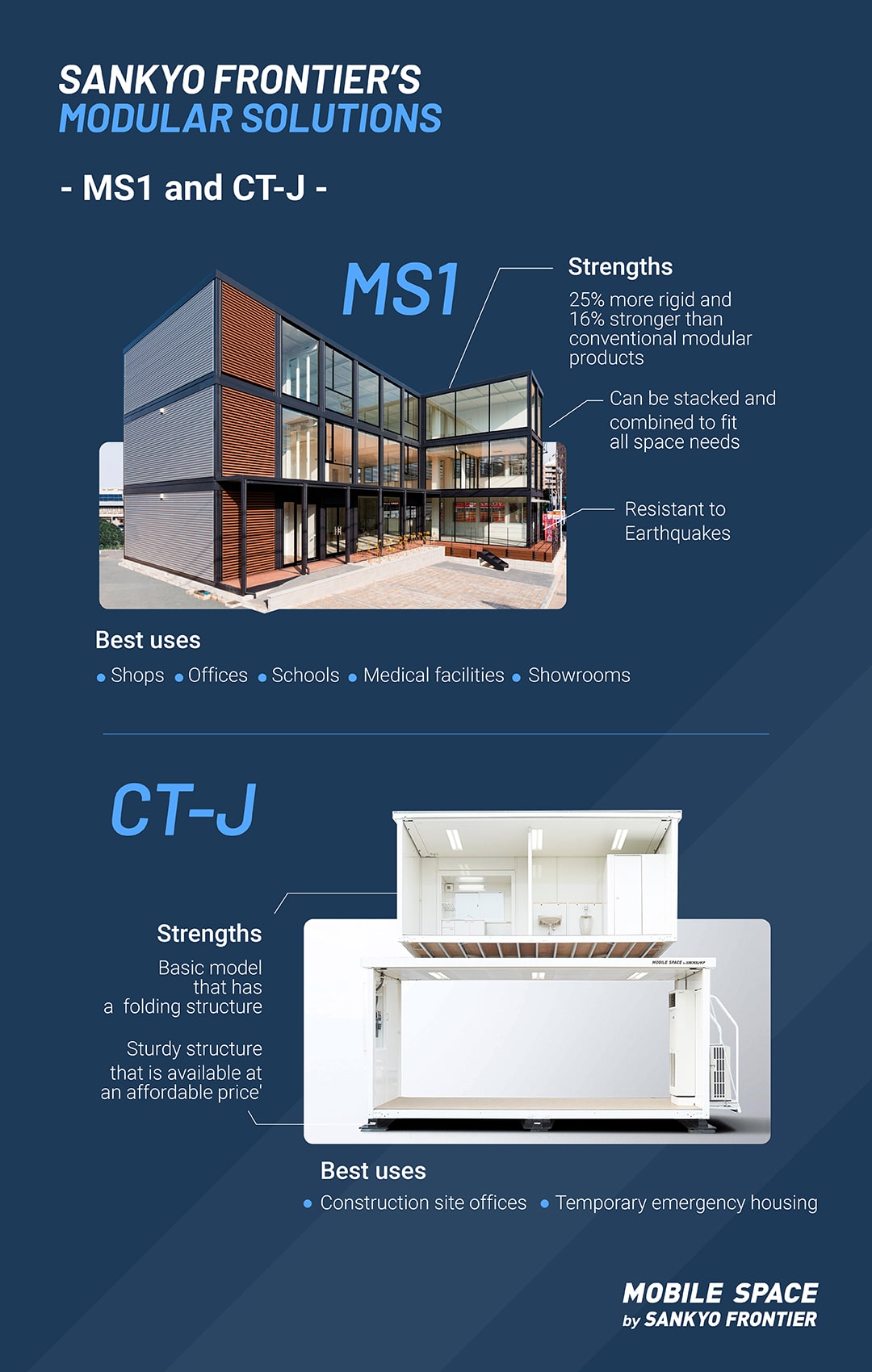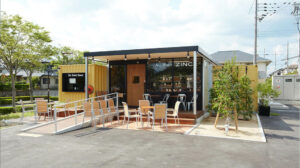Quick, easy, and reliable. These are just three key traits defining modular buildings and portable cabins. These prefabricated constructions are highly versatile, suitable for a variety of building purposes, from homes and offices to schools and hospitals.
Modular constructions and portable cabins are considered buildings in the eyes of the law, so they are subject to the same codes and regulations as regular property or office developments.
Across Asia, building regulations are not uniform and will vary from country to country.
This article will highlight the regulations in four key countries: Singapore, Malaysia, Myanmar, and Japan. Below is a summary of the points we will cover:
- Why building regulations matter
- The complicated nature of Asia’s building regulations
- Modular building regulations in Singapore
- Modular building regulations in Malaysia
- Modular building regulations in Myanmar
- Modular building regulations in Japan
The building regulations covered in this article are accurate at the time of writing (25 April 2022). They are subject to change depending on the laws of their respective countries.
WHY BUILDING REGULATIONS MATTER
While modular buildings and portable cabins are constructed differently from regular buildings, they still have to comply with the same regulations. It is crucial for all buildings to be built with a safety-first approach with the end-users in mind – and modular constructions are no exception to this rule.
Even though adherence to building regulations inevitably extend the duration of any construction project, it is a crucial step to ensure that the buildings are held up to only the highest standards to protect property and save lives.
MANAGING ASIA’S FRAGMENTED BUILDING REGULATIONS
As a highly fragmented region of multiple countries, Asia does not have uniform building regulations – in fact, the Global Alliance for Buildings and Construction (GlobalABC) identified that some countries do not have clear building codes to govern building construction. In GlobalABC’s 2021 report on buildings and construction, 15% of Asian countries were found to lack building codes or certification programmes.
Add to that the fact that, depending on the country, building codes may need to be updated every three to five years. Given the region’s differing building codes, it is necessary to tailor building products accordingly when operating in different countries.
At Sankyo Frontier, we mainly operate in four core Asian countries: Singapore, Malaysia, Myanmar, and Japan. Do note that the building regulations that we cover in the following few sections are accurate at the time of writing, subject to change when the respective regulators implement any updates.
MODULAR BUILDING REGULATIONS IN SINGAPORE
In Singapore, the BCA stipulates that modular buildings and portable cabins, or Prefabricated Prefinished Volumetric Constructions (PPVCs), must comply with regulations specified by several government agencies, such as the Land Transport Authority (LTA), National Environment Agency (NEA), and Urban Redevelopment Authority (URA).
Along with these compliances, modular constructions must be reliable and durable under the PPVC Acceptance Framework. Mapped out by building regulatory agencies and industry experts alike, this framework starts from a six-step acceptance process by the Building Innovation Panel (BIP) before accreditation is sought through the PPVC Manufacturer Accreditation Scheme (MAS). Such stringent processes ensure that the design and materials used for portable constructions are sturdy and resilient.
MODULAR BUILDING REGULATIONS IN MALAYSIA
In Malaysia, the construction of modular buildings and portable cabins are classified under the Industrialised Building System (IBS). Led by the Construction Industry Development Board (CIDB), specifically the CIDB-IBS, the IBS adheres to the Quality Assessment System in Construction (QLASSIC) to maintain the strength and quality of modular constructions.
Specifically, QLASSIC measures and evaluates the quality of building constructions in accordance with the Construction Industry Standard. Under this standard, the following parameters are examined to assess the capability of modular constructions:
- Structural works: This tests the compressive strength of concrete, tensile strength of steel reinforcements, non-destructive testing of uniformity and cover hardened concrete.
- Architectural works: This refers to finishes, floors, internal walls, ceilings, doors, windows, fixtures, external walls, aprons, perimeter drains, structure car parks, and car porches.
- Mechanical and electrical works: This includes air-conditioning and mechanical ventilation (ACMV), fire protection, and sanitary and plumbing works.
- External works: This includes link-way shelters, external drains, roadworks, ground-level car parks, footpaths, turfing, playgrounds, courts, gates, fences, swimming pools, electrical substations, guardhouses, and bin centres.
A numerical marking system is used to assess whether the workmanship complies with the standard. The consolidated marks are then used to calculate the QLASSIC score (in %) for the overall modular building project.
MODULAR BUILDING REGULATIONS IN MYANMAR
In Myanmar, all buildings must adhere to the Myanmar National Building Code, which was last updated in 2020. This building code is broken down into seven distinct sections, with regulations put in place for:
- Planning, environment administration, and legislation
- Architecture and urban design
- Structural design
- Soil and foundation
- Building services
- Building materials
- Construction practices and safety
- Essential fittings
- Lighting
- Electrical and allied installations
- Lifts and escalators
- Water supply, drainage, and sanitation
- Heating
- Mechanical ventilation
- Air conditioning
- Fire protection
Specific to modular constructions, the Myanmar National Building Code approves their use under the “Architecture and Urban Design” section. Under the code, modular constructions are classified as material efficiency, where few materials are used to produce higher output and generate less waste.
MODULAR BUILDING REGULATIONS IN JAPAN
In Japan, the Building Standard Law (BSL) regulates the construction of all buildings in the country, including modular structures and portable cabins. The BSL is stringent, encompassing codes for:
- Structural safety
- Fire safety
- Seismic retrofitting
- Land-use zones
- Environmental sanitation
- Stairway construction
- Drainage
As Japan’s climate and topography make it prone to earthquakes and typhoons, such tough codes are crucial to ensure that buildings can withstand such natural disasters.
SANKYO FRONTIER’S PROMISE
At Sankyo Frontier, we ensure that all our modular building projects comply with the relevant local building codes. Regardless of where we operate – be it Singapore, Malaysia, Myanmar, or Japan – the safety of the end-users is our core priority.
Our process begins from a meeting with local authorities and professional engineers to get a sound understanding of prevalent regulations and building codes. Based on our findings, we will modify and redesign our modules accordingly. We then proceed to test the modules and obtain the necessary approvals from local authorities before exporting them.
OUR AVAILABLE SOLUTIONS AND PRODUCTS
Sankyo Frontier offers two primary modular products: the MS1 and CT-J. Where MS1 will be for sale while CT-J will be for rent, and each one comes with its own separate set of capabilities as follows:
For the full specifications, visit our Modular Solutions section and submit a request for our catalogues.
CONTACT US
If you have a project in mind or want to know more about our products, please contact us, and we are happy to help with any questions.




